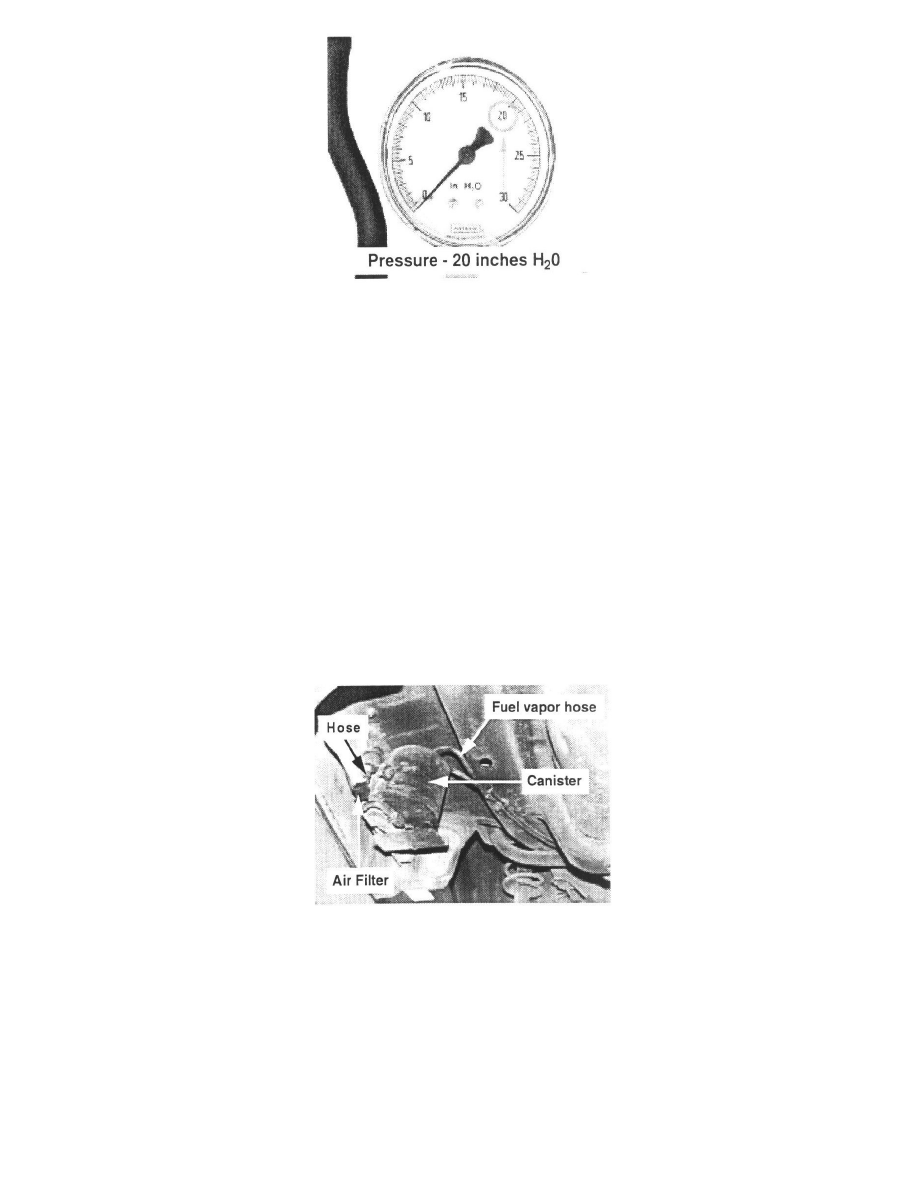Sonata GL V6-3.0L (1997)

4.
Using a Mityvac pump (Snap-On P/N YA4000 or equivalent), connect the pump to the one-way valve in the low pressure gauge and then pump
the system until the low pressure gauge reads 20 inches H20.
NOTES:
^
1 inch H20 = 0.036 psi
20 inches H20 = 0.72 psi
30 inches H20 = 1.08 psi
^
The low pressure gauge is a very sensitive tool. Do not exceed 30 inches H20 (1.08 psi) when pressurizing the system (pressurize slowly!) or the
gauge will be damaged.
^
Never use shop air.
^
Never pressurize the low pressure gauge by itself.
^
Slowly pressurize system up to 20 inches H20. Use the bleeder valve to bleed off pressure if over 20 inches H20 and allow 30 seconds for the
system to settle. The system will "settle" (drop 3-7 inches H20) over a short period of time to equalize pressure throughout the system.
Repressurize the system with the Mityvac pump up to a pressure of 20 inches H20 after "settling" has stabilized. Monitor the gauge for two
minutes.
5.
Monitor the pressure gauge for two minutes.
A1.
If the gauge remains steady or drops less than 2 inches H20 (0.072 psi) in two minutes, the fuel tank does not require replacement.
A2.
Reconnect the disconnected canister-to-fuel tank hose.
A3.
Continue at step 10.
B1.
If the gauge drops more than 2 inches H20 (0.072 psi) in two minutes, a small leak is present.
B2.
Continue at Step 6
6.
Diagnose the fuel filler neck first for a small leak by performing all of the following:
A.
Swapping fuel caps with a known good fuel cap and repeating Steps 4 and 5.
